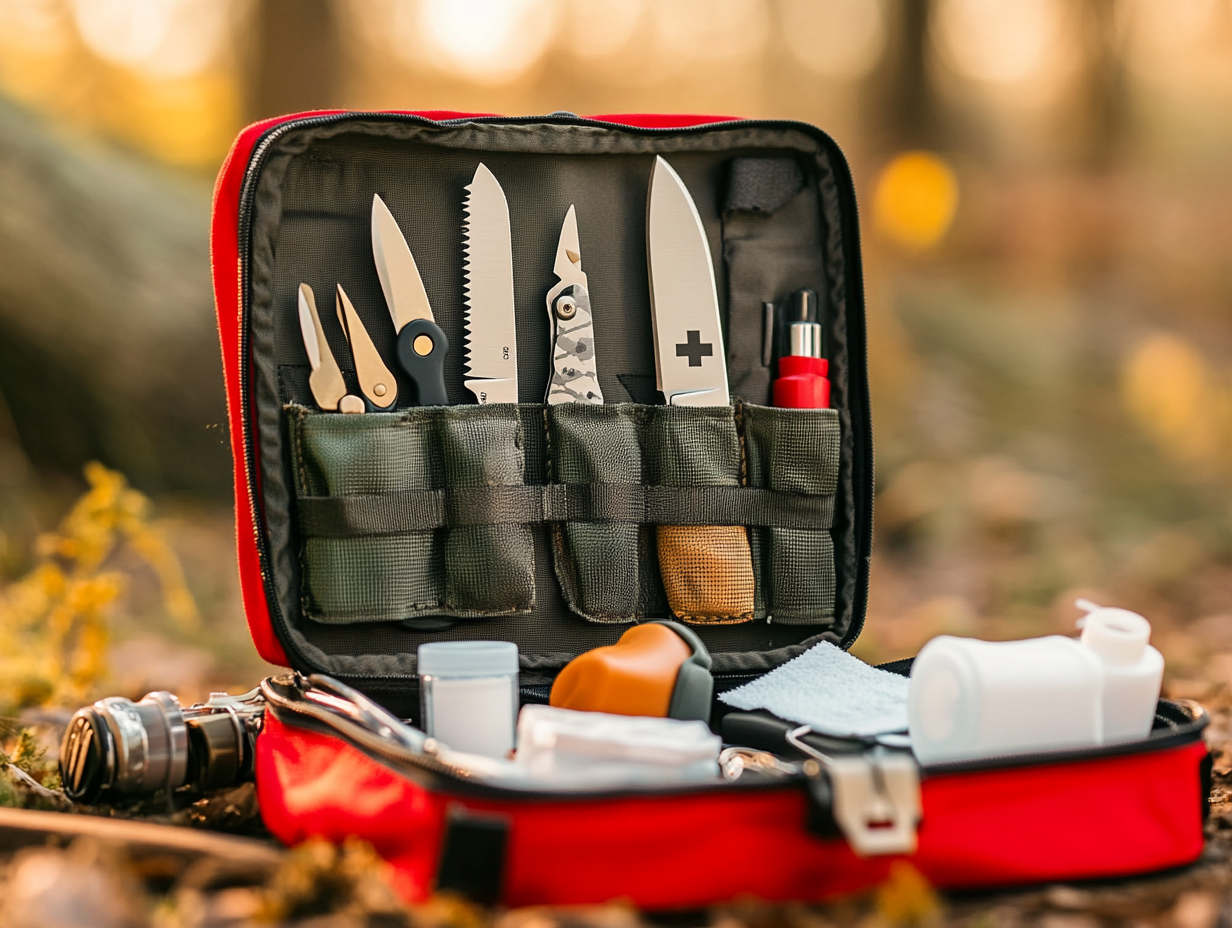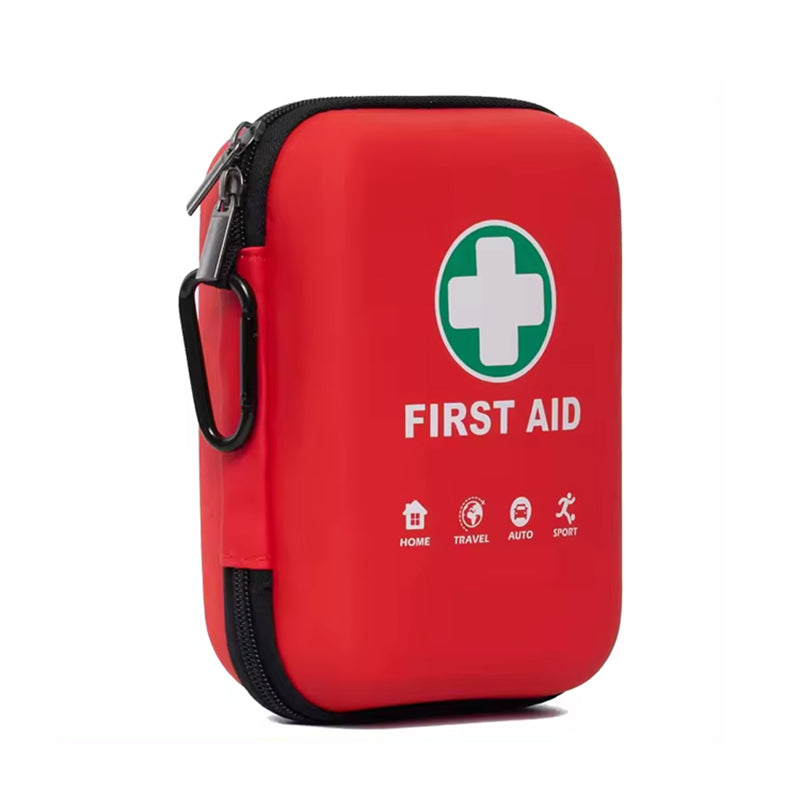
In the challenging world of wilderness survival, a multi-functional knife emerges as a crucial tool that can help us tackle numerous tricky situations.
Building Shelters
Cutting Branches - Laying the Foundation
Out in the wild, branches serve as the fundamental materials for constructing simple shelters. The main blade of a multi-functional knife proves its worth here, enabling us to cut down relatively thin branches. For instance, when planning to build a simple shed with an A-frame structure, you can utilize the knife to chop branches of appropriate lengths, typically around 2 - 3 meters. Hold the handle firmly, place the branch on a stable surface, angle the blade properly, and then saw back and forth to sever the branch.
Some branches possess stronger toughness, making the regular blade ineffective. In such cases, the serrated part of the knife comes to the rescue. Take vine plants, for example; the serrated edge can slice through them with greater efficiency. These vines can then be used to bind the branches, reinforcing the shelter's structure and enhancing its sturdiness.
Making Wooden Pegs - Securing the Framework
To make the shelter's frame more stable, wooden pegs are essential for fastening the branches. With the small folding knife part of the multi-functional knife, you can shape branches into wooden pegs with one pointed end and one flat end. The size of these pegs should be determined based on actual requirements. Generally, they are about 10 - 15 centimeters in length and 1 - 2 centimeters in diameter. During the shaving process, utmost attention must be paid to safety. Always fix the branch properly beforehand to prevent the knife from slipping and causing hand injuries.
Obtaining Food
Processing Prey - Transforming Catch into Meals
If you're fortunate enough to capture small prey like hares or birds in the wild, the multi-functional knife becomes the key instrument for handling the food. First, carefully slit open the prey's fur using the main blade. Then, skillfully cut the meat into appropriate pieces along the joints of muscles and bones. When dealing with a hare, for instance, start by making a cut on its abdomen, gradually peel off the skin, and then separate the meat on its limbs and body. Be extremely cautious during the cutting process to avoid puncturing the internal organs, which could contaminate the meat.
For fish, the small scissors part of the multi-functional knife can be used to trim off the fins and tails, facilitating subsequent cleaning and cooking. Subsequently, use the main blade to cut open the belly of the fish and remove the internal organs.
Digging up Root Vegetables - Uncovering Hidden Treasures
The wild is abundant with edible root vegetables such as the roots of ferns and wild yams. If your multi-functional knife has a digging tool, put it to use; if not, the main blade will do. First, dig out the soil surrounding the roots and then carefully extract them. Some roots may be buried relatively deep, necessitating deeper digging. During this process, be careful not to damage the roots as they could deteriorate more rapidly if harmed.
Making Fire
Shaving Kindling - Igniting the Spark of Hope
Dry sawdust and thin wood chips make excellent kindling materials. Employ the shaving blade part of the multi-functional knife to shave dry branches into sawdust or wafer-thin wood chips. Select a dry dead branch, place one end against the ground or a tree trunk, and gently shave off the sawdust. The thinner the wood chips or sawdust, the easier it will be to start a fire. Ideally, they should be as thin as paper.
Making Fire Sticks - Fuelling the Flames
Some multi-functional knives come equipped with magnesium rods. If yours doesn't, you can still fashion a fire stick using the knife. Shave one end of a dry wooden stick to make it fluffy, increasing its surface area. Then, carve small grooves on the stick with the knife to make it burn more easily. When it's time to use it, you can start a fire by rubbing it or lighting the fluffy end with other fire sources.
Self-protection
Making Simple Weapons - Defending Against Wild Animals
When you encounter dangerous wild animals during your wilderness sojourn, the multi-functional knife can swiftly arm you. Sharpening a branch into a spear can be a great defense. Opt for a relatively straight and thick branch, about 3 - 5 centimeters in diameter, and use the main blade to sharpen one end. The length can be adjusted according to the situation, generally around 1.5 - 2 meters. This spear can act as a deterrent from a distance.
You can also transform branches into shorter clubs for close combat. Trim the branches to around 50 - 80 centimeters, remove the extra branches, and smooth the surface of the club for easy gripping and swinging.
Sending out Distress Signals - Calling for Help
If your multi-functional knife has a reflective mirror, on a sunny day, point it towards the sky or in the direction where rescuers might be. Adjust the angle to make the reflected light flash, sending out a distress signal. If there's no reflective mirror, you can polish the metal part of the knife, like the blade, and use it in the same way. Additionally, use the knife to carve distress signals, such as the letters "SOS", on trees or conspicuous places to make it easier for rescuers to find you.
Although a multi-functional knife can play many crucial roles in wilderness survival, it's far from sufficient given the complex and ever-changing wild environment. A well-equipped
outdoor first aid kit is equally indispensable. An outdoor first aid kit typically contains various medications like bandages, disinfectants, antipyretics, anti-inflammatory drugs, as well as first aid supplies such as adhesive bandages and tourniquets. Whether you encounter accidental injuries or sudden illnesses, it can offer timely medical assistance at critical moments and significantly boost your chances of survival. Therefore, before embarking on any wilderness adventure, don't forget to meticulously select a suitable outdoor first aid kit to provide a solid safeguard for your life.

